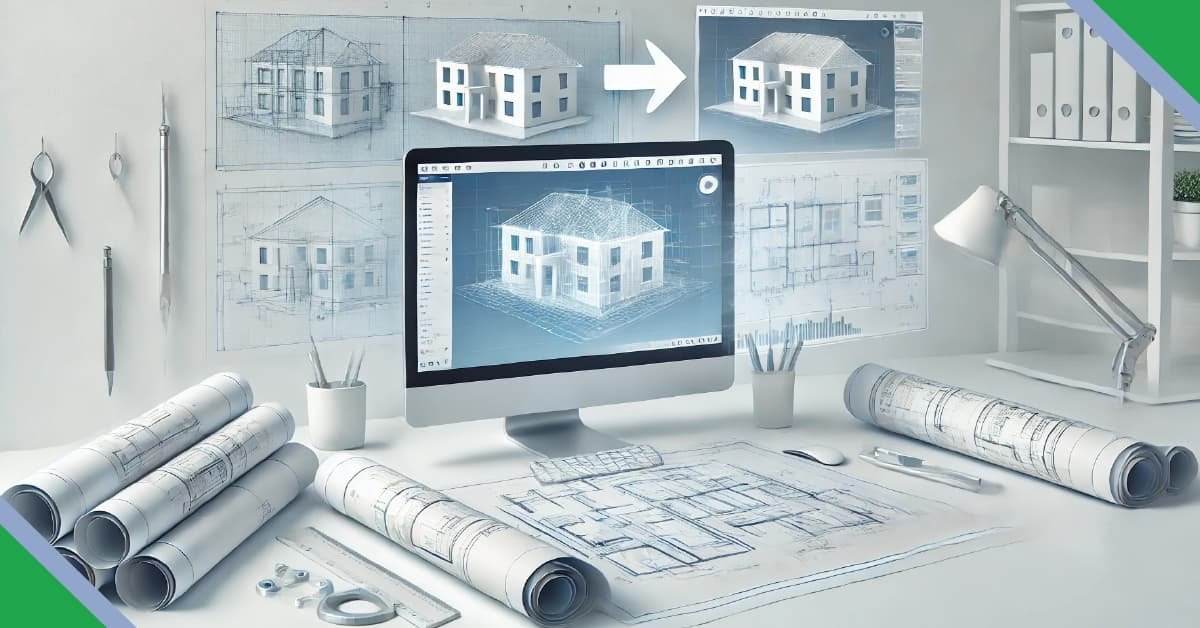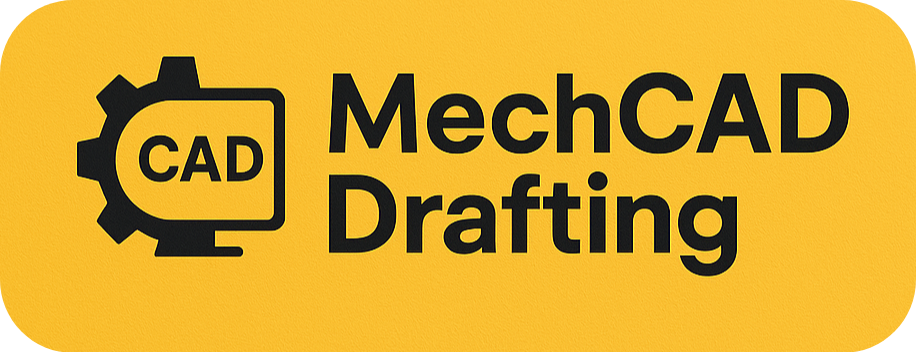CAD Conversion Services in Manufacturing: Enhancing Workflow and Accuracy

The manufacturing industry is undergoing a digital transformation, driven by a need for increased speed, precision, and efficiency. At the heart of this transformation lies one of the most valuable tools for modern production: CAD conversion services. These services are playing a crucial role in helping manufacturers streamline their workflows, enhance product accuracy, and remain competitive in a rapidly evolving global market.
In this blog, we explore how CAD conversion services are revolutionizing the manufacturing process—right from concept to production—and why every manufacturer, large or small, should consider integrating them into their operations.
Chapter 1: What Are CAD Conversion Services?
CAD conversion services involve transforming paper-based, hand-drawn, or outdated design formats into modern computer-aided design (CAD) files. These files are compatible with the latest manufacturing software and systems used across engineering and production environments.
The most common types of CAD conversion include:
- Paper to CAD: Digitizing blueprints and sketches.
- 2D to 3D conversion: Creating 3D models from 2D drafts.
- Format translation: Converting files between formats like DWG, DXF, IGES, STEP, and STL.
- Legacy file updates: Updating old CAD files to be usable with current tools.
By turning old or incompatible files into modern, editable CAD formats, manufacturers gain access to more efficient workflows and better design precision.
Chapter 2: The Role of CAD Conversion in Manufacturing
Manufacturing is highly reliant on accurate, well-organized design data. Whether it’s creating prototypes, optimizing assembly lines, or programming CNC machines, digital precision is vital. CAD conversion services ensure that manufacturers can work with reliable data, regardless of where it originated.
Here’s how CAD conversion services impact various areas in manufacturing:
1. Streamlined Product Design
Design teams often work with legacy data that needs updating. CAD conversion services make it easy to bring old designs into the digital fold, allowing designers to edit, iterate, and innovate without starting from scratch.
2. Prototyping and 3D Printing
Accurate 3D CAD models are the foundation of additive manufacturing. Without reliable digital files, creating physical prototypes becomes costly and time-consuming. CAD conversion ensures smooth, error-free transitions from screen to product.
3. CNC Machining and Automation
Modern CNC machines rely on precise CAD inputs. Converting drawings to clean, accurate CAD files improves machining efficiency, minimizes waste, and reduces the likelihood of errors during production.
4. BOM and Parts Management
CAD conversion allows easier extraction of part details and dimensions, helping to streamline bill of materials (BOM) creation, sourcing, and inventory management.
Chapter 3: Real-World Manufacturing Use Cases
Case 1: Updating Legacy Tooling Designs
A manufacturing firm specializing in metal stamping needed to modernize decades-old tooling designs. CAD conversion services helped them digitize these documents into editable 3D models, enabling faster tooling adjustments and improved quality control.
Case 2: Aerospace Component Fabrication
An aerospace manufacturer converted 2D diagrams into 3D CAD models to support high-precision machining of aircraft components. The result: reduced production time, fewer machining errors, and better integration with quality assurance tools.
Case 3: Global Supplier Collaboration
A multinational manufacturer used CAD conversion services to standardize engineering files across different locations. This helped teams from the US, Europe, and Asia collaborate on design updates in real time, reducing delays and miscommunication.
Chapter 4: Benefits of CAD Conversion Services in Manufacturing
Let’s break down the advantages manufacturers gain by adopting CAD conversion services:
1. Enhanced Design Accuracy
CAD conversion eliminates the guesswork that comes with deciphering old or unclear drawings. Vector-based files allow for exact measurements, accurate scaling, and better tolerance control.
2. Improved Workflow Efficiency
By reducing the need to redraw or reinterpret existing plans, manufacturers can save significant time during the design and production phases. Converted files integrate easily with modern systems, speeding up processes.
3. Seamless Legacy Integration
Many manufacturing companies rely on legacy data from older products or machinery. CAD conversion bridges the gap between old and new technologies, allowing legacy designs to work with modern CAD and PLM systems.
4. Better Collaboration and Communication
Digital CAD files are easier to share with clients, suppliers, and production teams. With clearer designs and annotations, communication improves, which reduces errors and rework.
5. Cost Savings
Less time spent redrawing plans, fewer production errors, and better resource management all contribute to significant cost reductions in the long term.
Chapter 5: Common CAD Conversion Challenges—and How to Overcome Them
While CAD conversion services offer many benefits, certain challenges can arise without proper handling.
– Poor Original Quality
Low-resolution scans or faded blueprints can be difficult to convert. Professional CAD conversion services often combine manual drafting with software tools to improve clarity and accuracy.
– Inconsistent Standards
In organizations with no standardization, multiple file formats and naming conventions can cause confusion. A conversion partner can help implement a unified system across the board.
– Data Loss
Improper conversion can lead to missing dimensions, annotations, or layers. This is why manual verification and quality checks are essential parts of the conversion process.
Chapter 6: Choosing a CAD Conversion Partner
When selecting a provider for CAD conversion services in manufacturing, consider the following criteria:
1. Industry Experience
Manufacturing requires specific knowledge about tolerances, materials, and production processes. A provider with relevant industry experience is more likely to deliver reliable results.
2. Software Compatibility
Ensure the provider uses industry-standard tools such as AutoCAD, SolidWorks, CATIA, Creo, or Inventor—and can deliver in your preferred file format.
3. Quality Assurance
Ask about the provider’s QA processes. Will they manually review the output? Do they offer revisions?
4. Turnaround Time
Deadlines matter in manufacturing. Choose a service that can meet your schedule without compromising on quality.
5. Data Security
Protecting intellectual property is critical. Ensure the provider follows strict confidentiality protocols, including NDAs and secure data handling.
Chapter 7: CAD Conversion for Smart Manufacturing
As manufacturing moves toward Industry 4.0, digital design data plays a larger role than ever. CAD conversion services are integral to enabling smart manufacturing processes such as:
– Digital Twins
Accurate 3D CAD models serve as the digital twin of physical assets, allowing for real-time monitoring and optimization.
– Simulation and Testing
Finite element analysis (FEA), fluid dynamics simulations, and stress testing all rely on high-quality CAD data.
– Predictive Maintenance
Design files help determine wear patterns and failure points, improving maintenance planning and reducing downtime.
– AI-Driven Manufacturing
Machine learning systems use CAD data to detect patterns, predict performance, and recommend optimizations.
Chapter 8: Integrating CAD Conversion with ERP and PLM Systems
Many manufacturers use enterprise resource planning (ERP) and product lifecycle management (PLM) systems to manage workflows. CAD conversion services make it possible to integrate old data into these systems seamlessly.
– Centralized Design Archives
Digitized files can be stored, searched, and retrieved easily within ERP or PLM systems, eliminating the need for physical storage.
– Automated Workflows
Converted CAD files can trigger automated processes such as BOM generation, procurement, and quality checks.
– Improved Compliance
With consistent and well-documented digital files, manufacturers can meet industry standards and audits more easily.
Chapter 9: The Future of CAD Conversion in Manufacturing
CAD conversion services will continue to evolve alongside manufacturing. Here are a few future trends to watch:
– AI-Assisted Conversion
Machine learning tools will soon enhance the speed and accuracy of complex conversions.
– Cloud-Based CAD Collaboration
With more companies working remotely or globally, cloud platforms will support real-time access and editing of converted files.
– Automated Revision Tracking
Version control systems will integrate with converted CAD files, making it easier to track changes across projects.
– Extended Reality (XR)
AR and VR technologies will use converted 3D files for immersive training, assembly guidance, and virtual prototyping.
Conclusion
CAD conversion services have become an essential pillar of success in the manufacturing industry. By digitizing outdated drawings and streamlining file formats, these services help manufacturers achieve greater accuracy, faster workflows, and better integration with modern technologies.
Whether you’re modernizing a production line, onboarding new staff, or upgrading legacy equipment, CAD conversion services can drastically improve your efficiency and product quality.
Now is the time to embrace these services—not just as a tool for the present but as a strategy for the future. From reducing errors and improving collaboration to enabling smarter, faster production, CAD conversion services are the bridge between traditional manufacturing and the future of industry.
